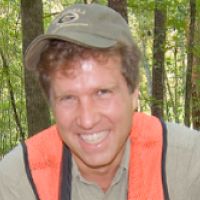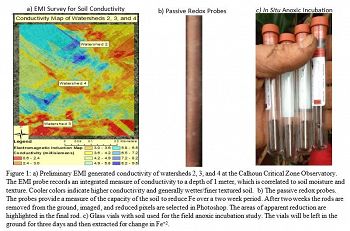Hodges et al., 2015
Linking spatial and temporal patterns of soil moisture with upland soil iron reduction
Hodges, C.; Markewitz, D.; Thompson, A. (2015)
American Geophysical Union Fall Meeting, December 2015, San Francisco, CA
-
Calhoun, Shale Hills, GRAD STUDENT
-
Calhoun, INVESTIGATOR
-
Calhoun, Luquillo, INVESTIGATOR, COLLABORATOR
Abstract
Iron minerals play important roles in governing soil nutrient availability and carbon dynamics. Periods of intermittent anoxia (low-oxygen) in upland soils can drive microbial reduction and dissolution of iron minerals. However, quantifying ecosystem-scale iron reduction in upland soils is challenging. The key condition necessary for soil iron reduction is water saturation of soil micropores, even if the entire soil profile is not flooded. We assessed soil moisture and texture across three first-order watersheds at the Calhoun Critical Zone Observatory in South Carolina, USA over one year using electromagnetic induction (EMI). From these point measurements, we have created monthly maps of interpolated soil moisture. From the EMI data, we found that locations that remain relatively wet or dry throughout the year are not related to hill-slope position but to differences in soil texture along a catena. Across a gradient of soil moisture and texture (based on soil conductivity from the EMI probe) we installed passive redox sensors and conducted in situ iron reduction experiments. This data will be presented and the relationships between iron reduction, the spatial distribution of soil moisture/clay content, and the significance of these data with respect to soil carbon cycling will be discussed.
Citation
Hodges, C.; Markewitz, D.; Thompson, A. (2015): Linking spatial and temporal patterns of soil moisture with upland soil iron reduction. American Geophysical Union Fall Meeting, December 2015, San Francisco, CA.
Explore Further




